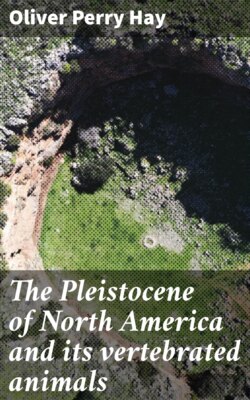Читать книгу The Pleistocene of North America and its vertebrated animals - Oliver Perry Hay - Страница 65
In Illinoian Drift Area.
Оглавление3. Cincinnati, Hamilton County.—In the first edition of his “Ossemens Fossiles,” in 1812 (vol. II, Mastodons, p. 12), Cuvier mentioned the discovery of a tooth of a mastodon on the right bank of Ohio River, between the two Miamis. In 1843 (Ann. Mag. Nat. Hist., ser. 1, vol. XII, p. 127), Lyell reported that teeth of the mastodon and of an elephant had been found 4 miles north of Cincinnati, in gravel beds of the higher terrace.
In his “Travels in North America,” volume II, page 60, Lyell wrote that several teeth of mastodons had been discovered on Mill Creek, and on what he indicated as the upper terrace. He presented a list of the genera of mollusks that had been found at the same place. He added that mastodon remains had been found in the strata of the upper terrace, both above and below Cincinnati. Professor Fenneman writes that in Mill Creek valley the Illinoian is distinctly terrace-like and composed of interbedded sheets of outwash and till, as though made during repeated advances of the ice. The teeth mentioned may belong, therefore, to the Illinoian or Sangamon.
The most important discovery of mastodon remains is that recorded by Seth Hayes (Jour. Cin. Soc. Nat. Hist., vol. XVII, 1895, p. 217) and by E. W. Claypole (Amer. Geol., vol. XV, 1895, p. 325). These remains form what is known as the “Shaw mastodon.” They were discovered in Hyde Park, in the northeastern part of Cincinnati, in section 27 of Columbia Township. The spot is 1.4 miles away from the river, and just south of the upper part of Crawfish Creek. Remains of at least three mastodons were exhumed, including 3 tusks, a lower jaw with teeth, and many other bones. There were found also a tooth and a vertebra of a horse. An interesting matter regarding the lower jaw is the presence of 2 mandibular tusks of considerable size (Hayes, as cited, plates XI, XII). The diameter of each is given as 1.5 inches. One projected beyond the jaw 9.75 inches; the other, 7.4 inches. They were curved rather strongly downward. The specimen is to be referred to Mammut progenium Hay. The geology of the locality will be described on page 328.
Under this number may be recorded the discovery of mastodon teeth in a well sunk at Mount Washington, about 8 miles east of the central part of Cincinnati (Fuller and Clapp, Water-Supply Paper 259, 1912, p. 27). The teeth were found in coarse gravel, which lies only 15 feet from the surface, and is overlain by old till and loess. The indications are that the age of the mastodon is early Pleistocene.
